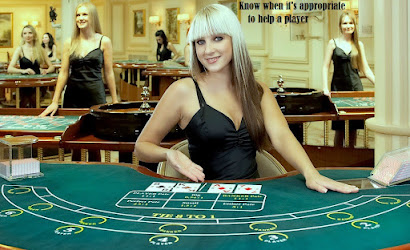Roulette
Whimsical anecdotes about the beginning of roulette incorporate its development by the seventeenth century French mathematician Blaise Pascal, by a French priest, and by the Chinese, from whom it was evidently communicated to France by Dominican priests. In actuality, roulette was determined in France in the mid eighteenth century from the more established games hoca and portique, and it is first referenced under its present name in 1716 in Bordeaux. Following a few changes, roulette accomplished its current format and wheel structure around 1790, after which it quickly acquired status as the main game in the club and betting places of Europe. During the years 1836 to 1933, roulette was prohibited in France.
Hardware
The roulette table is made out of two segments, the actual wheel and the wagering format, otherwise called the roulette design. There are two styles of roulette tables. One has a solitary wagering design with the roulette wheel toward one side, and different has two formats with the wheel in the middle. The wheel turns on a level plane.
Heading the format plan, which is imprinted on green baize, is a space containing the figure 0 (European style) or the figures 0 and 00 (American style, albeit such wheels were utilized additionally in Europe during the eighteenth and nineteenth hundreds of years). The principle bit of the plan is made out of 36 successively numbered rectangular spaces, then again shaded red and dark and organized in three segments of 12 spaces each, starting with 1 at the top and finishing up with 36 at the base. Straightforwardly underneath the numbers are three clear spaces (on certain designs these are stamped "2 to 1" and are situated on the players' side of the table). On one or the other side of these or along one side of the sections are rectangular spaces checked "first 12," "second 12," and "third 12" on American-style formats. On European-style designs these terms are "12p" (première), "12m" (milieu), and "12d" (dernière douzaine). Six additional spaces are checked "red" (rouge), "dark" (noir), "even" (pair), "odd" (hinder), "1–18" (low, or manque), and "19–36" (high, or old fashioned).
안전한 카지노사이트Get a Britannica Premium membership and access restrictive substance.
Buy in Now
The roulette wheel comprises of a strong wooden plate somewhat raised fit. Around its edge are metal segments known as separators or worries, and the compartments or pockets between these are called kayaks by roulette croupiers. 36 of these compartments, painted on the other hand red and dark, are numbered nonconsecutively from 1 to 36. On European-style wheels a 37th compartment, painted green, conveys the sign 0, and on American wheels two green compartments on inverse sides of the wheel convey the signs 0 and 00. The wheel, its axle consummately adjusted, turns flawlessly in a practically frictionless way.
The standard roulette table utilizes up to 10 arrangements of wheel checks (for the most part called chips). Each set is diversely hued; each generally comprises of 300 chips; and there is one set for every player. The chips as a rule have a solitary essential worth, albeit a few club additionally sell chips of lesser worth. The shade of the chips shows the player, not the worth of the chips. On the off chance that a player wishes to purchase chips of marginally higher worth, the croupier places a marker demonstrating that worth on top of the table's heap of chips of the shading relating to the chips bought. Most gambling clubs likewise have high-esteem chips that can be bet at any gaming table. Dissimilar to roulette chips, these have their numbered values imprinted on them.
Wagers
It is feasible to put down the accompanying wagers in roulette: (1) straight, or single-number (en plein), in which the chips are put solidly on one number of the format, including 0 (and furthermore 00 on American designs), so the chips don't contact any of the lines encasing the number; a triumphant single-number bet pays 35 to 1 (for every unit bet, a triumphant player accepts his unique bet and 35 coordinating with units); (2) split, or 2-number (à cheval), in which the chips are put on any line isolating any two numbers; if either wins, result chances are 17 to 1; (3) road, or 3-number (transversale pleine), in which the chips are put outwardly line of the format, risking everything numbers inverse the chips; result chances on any of the three numbers are 11 to 1; (4) square, quarter, corner, or 4-number (en carré), in which the chips are set on the crossing point of the lines between any four numbers; result chances are 8 to 1; (5) line, or 6-number (sixaine or transversale six), in which the chips are put on the convergence of the sideline and a line between two "roads"; result chances are 5 to 1; (6) segment (colonne), or 12-number, in which the chips are set on one of the three clear spaces (a few formats have three squares, stamped "first," "second," and "third") at the lower part of the design, accordingly risking everything numbers over the space; result chances are 2 to 1; (7) handfuls (douzaine), or 12-number, in which the chips are set on one of the spaces of the design checked "12," risking everything 1–12, 13–24, or 25–36; result chances are 2 to 1; (8) low-number or high-number, in which the chips are put on the format space checked "1–18" (manque) or on the space stamped "19–36" (old fashioned); result is even cash; (9) dark or red, in which the chips are set on a space of the design checked "dark" (noir) or on a space checked "red" (rouge; a few designs have a huge dark or red precious stone molded plan rather than the words); result is even cash; (10) odd-number or much number, in which the chips are set on the space of the format checked "odd" (impede) or on the space checked "even" (pair); result is even cash. 카지노사이트
On designs with a solitary zero (European style), the 0 might be remembered for a 2-number bet with any abutting number, in a 3-number bet with 1 and 2 or with 2 and 3, and in a 4-number bet with 1, 2, and 3 at the ordinary chances for these wagers. With the American-style 0 and 00, a 5-number line bet additionally is conceivable, the player setting his chips on the corner crossing point of the line isolating the 1, 2, 3 from the 0 and 00, with result chances of 6 to 1.
The play
The game starts when one of the croupiers (sellers) in participation requires the players to make their wagers, which they do by setting chips on the spaces of the format on any number, gathering, or characterization they expectation will win.
The croupier ordinarily begins the wheel turning a counterclockwise way and afterward turns a little ivory or plastic ball onto the bowl's back track the other way. Players might keep on putting down wagers while the haggle are moving until the ball eases back down and is going to drop off the back track, at which time one of the croupiers reports that no more wagers might be made.
At the point when the ball falls and stops between any two metal parts of the wheel, it denotes the triumphant number (or a 0 or 00), the triumphant shading, and some other allowed bet that relates to a triumphant number or image. The seller quickly reports the triumphant number and its tone and places a unique marker on the relating number on the format. He first gathers all losing wagers, not upsetting the chips that are laying on winning spaces, and afterward takes care of any triumphant wagers.
House chances
When utilizing the American-style wheel with the 0 and 00, the benefit ("vigorish") for the bank ascends to an additional 2 sections in 38, or about 5.26 percent, all things considered. The lone exemption is the 5-number line bet, where the house advantage is about 7.89 percent.
Roulette as played in areas other than the United States and the Caribbean is something very similar with the exception of that the haggle contain just a solitary zero (0). This decreases the bank's benefit to about 2.7 percent. In certain club when 0 shows up, all even-cash wagers—red, dark, odd, even, high, low—are en jail ("detained"). On the following twist of the wheel, if 0 shows up once more, the house gathers half of each detained bet; if not, it gathers all losing wagers and returns the first wagers to any champs. With this standard the bank's benefit on even-cash wagers is decreased to about 1.35 percent.
Frameworks
Innumerable wagering frameworks have been formulated to beat the wheel. The greater part of these frameworks base on the even-cash wagers. Current numerical hypothesis, just as more than two centuries of functional playing, notwithstanding, have convincingly exhibited that it is difficult to beat roulette with any kind of wagering framework. Since the bank holds a benefit on any sort of bet, over the long haul it doesn't make any difference how a player joins or shifts his wagers. By and by, most wagering frameworks rearrange the measures of the successes and misfortunes: an increment in the shot at winning is adjusted against a more prominent misfortune once it happens, as it will at some point or another. The most seasoned and most normal wagering framework is the martingale, or bending over, framework on even-cash wagers, in which wagers are multiplied logically after every misfortune until a success happens. This framework most likely traces all the way back to the development of the roulette wheel. Two other notable frameworks, likewise dependent on even-cash wagers, are the d'Alembert framework (in light of hypotheses of the French mathematician Jean Le Rond d'Alembert), in which the player builds his wagers by one unit after every misfortune except decre





Most Popular FREE Online Gambling And Casino Games (in 2022) Get Started now! Judiking88 Found For You The Best Games - Slots, Roulette, Blackjack, Poker & Many More
ReplyDelete